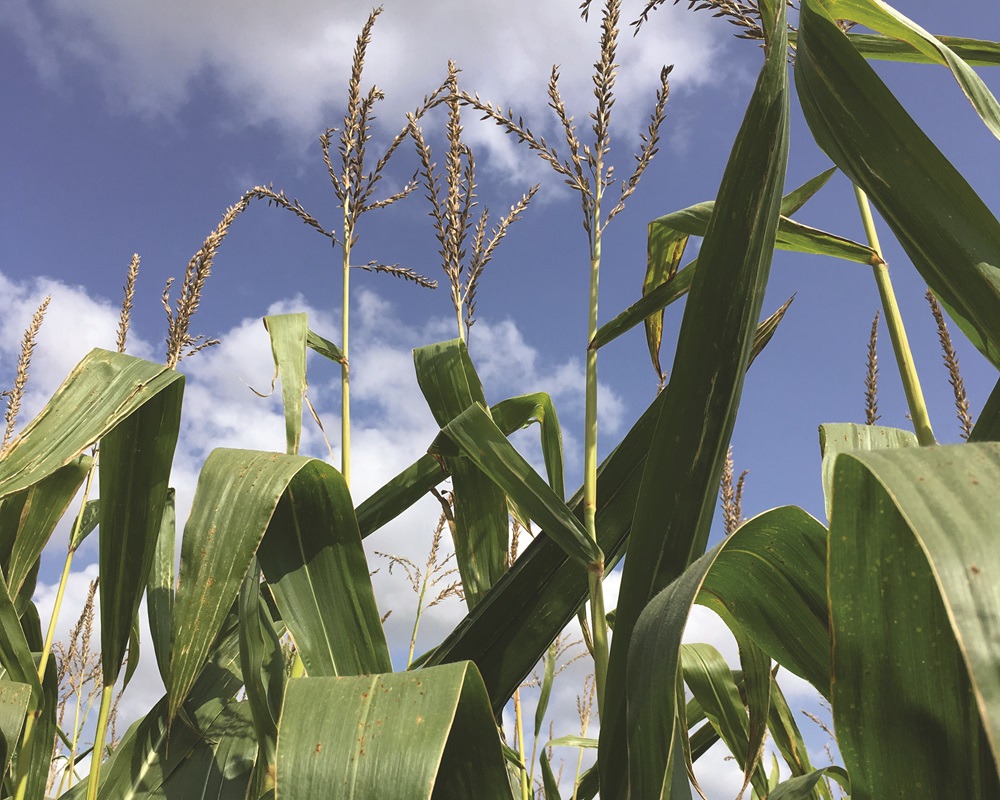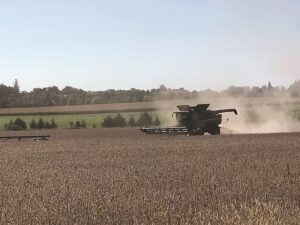New fertility recommendations
LONG-TERM ONTARIO P AND K STUDY

THE YIELD POTENTIAL of modern corn, soybean, and wheat varieties are the highest they’ve ever been. However, recent years have also brought considerable increases in fertilizer input costs. Achieving crop yield potential has become a much more costly activity. Conversely, reducing fertilizer rates to save unnecessary expenses can deplete baseline nutrient levels over time, particularly as more productive crop varieties extract more fertility resources from soil.
Solving this conundrum is the objective of a three-phase research project led by Horst Bohner, Ontario Ministry of Agriculture, Food and Rural Affairs (OMAFRA) soybean specialist, and Dave Hooker, associate professor with the University of Guelph, Ridgetown.
Now entering the last phase, the pair and their colleagues are determining how a sufficiency approach — the current standard — compares to a “build and maintain” application strategy for potassium and phosphorus, where both nutrients are applied in greater quantity in spring. The results should allow Ontario growers to bring fertility guidelines originating from research in the 1960s into the modern era.
BUILDING TRIAL PLOT FERTILITY
The project’s first phase ran from 2010 to 2018, comprising four field sites with varying levels of potassium and phosphorus. The two fertilizer strategies (sufficiency and build) were tested across the sites, with the highest yield from corn, soybeans, and wheat coming from the built regime. Yields of all three crops were lower in the no-build regime, which was treated with starter fertilizer applied at a rate that met or exceeded current OMAFRA recommendations.
However, more research was needed to determine whether higher yields were determined by a fertility build strategy. In the project’s second phase, Bohner and Hooker moved to a strategy of maintaining fertility levels on what were the “build” trial plots. This stage is referred to as a “drawdown” period because, as Bohner says, nutrients can take some time to stabilize in the soil after heavy application.
“There was still a yield difference between the non-built and built treatments, but it wasn’t as much. Roughly speaking, about half of what we saw previously,” says Bohner, comparing observations from the second and first research phases, respectively.
“The one very clear thing is on the soybean front — soybeans have this reputation for not needing much fertilizer. But in both phases, over the 10 years, it was very easy in a low-testing environment to pick up four to seven bushels on average by just putting on spring-applied phosphorus and potassium. Absolutely spring applied phosphorus and potassium works very well if the soil test is low.”
As the project enters phase three, he and Hooker now have to analyze different fertilizer application rates across a number of locations and placement sites.
“It’s a very long process, but we have to get it right because of the environmental considerations, especially with phosphorus. I expect this will take a number of years before we have enough data to have a very robust case,” says Bohner.
“Is the present way of doing things still correct? Even if it is, we have to update the numbers on what the right amount of fertilizer to put on these crops is.”
THE ECONOMICS OF USING MORE FERTILIZER
Achieving a crop’s yield potential is one thing — optimizing profitability is another. Given the high fertilizer cost, Bohner says economic considerations will be the biggest factor driving revised fertilizer recommendations, in addition to environmental considerations. He also expects the research project to eventually contribute to a calculator accounting for fertilizer cost and expected grain sale prices.
“There will be a calculator eventually. That’s my long-term goal. It’s hard because there are such huge swings in the selling price of grain, then the cost of fertilizer,” says Bohner.
Marty Vermey, senior agronomist for Grain Farmers of Ontario, says the project’s final results are much anticipated by the Ontario Soil Management Committee — an organization comprised of government, researchers, and industry representatives that establishes fertility recommendation guidelines in the province. Once updated, the provincial agriculture ministry will update its agronomy guidelines to reflect new recommendations.
“Soils change. You need soil samples at least every four years,” Vermey says. While updated data will provide a better idea of what it takes to achieve top yield potential in modern crop varieties, it is possible results will show less fertilizer can be applied — particularly when trying to optimize profits in the face of high fertilizer prices.
“We’re really working towards trying to get updates. The management practices and crop yields are way different than when the recommendations first came out decades ago. We’re removing a lot more nutrients. A 300-bushel corn crop is going to take a lot.”
Fertilizer Canada has contributed to this research in support of its 4R Nutrient Stewardship strategy, ensuring the right source of nutrients is applied at the right rate, right time and right place. •










